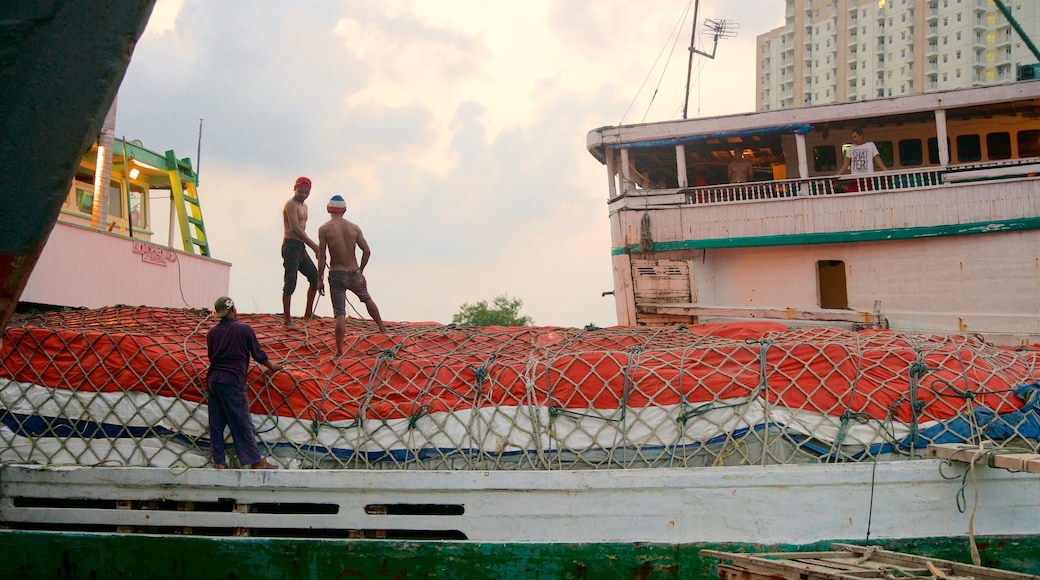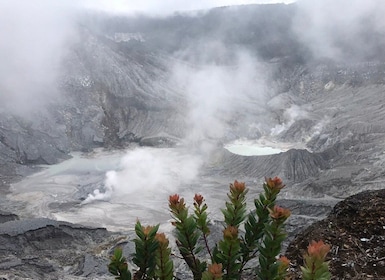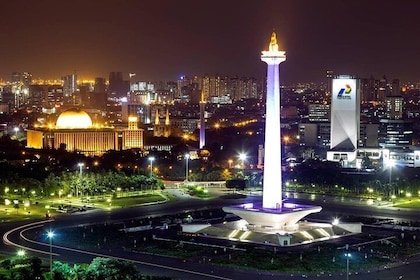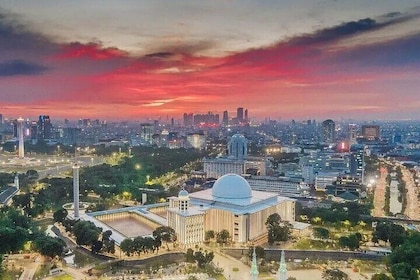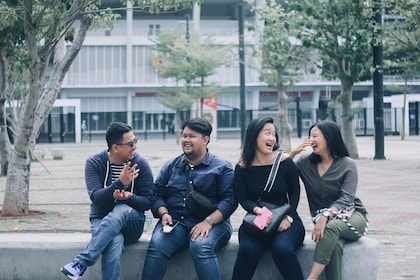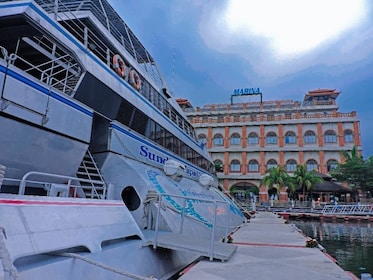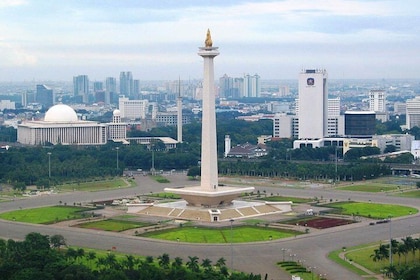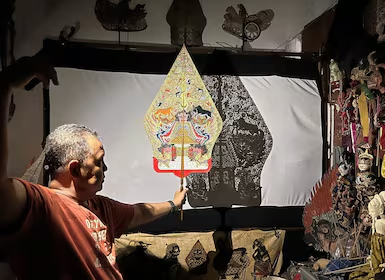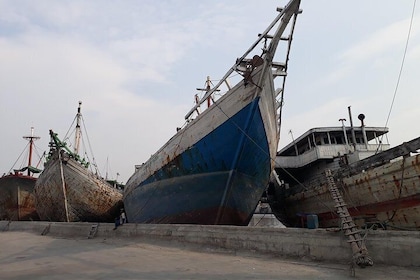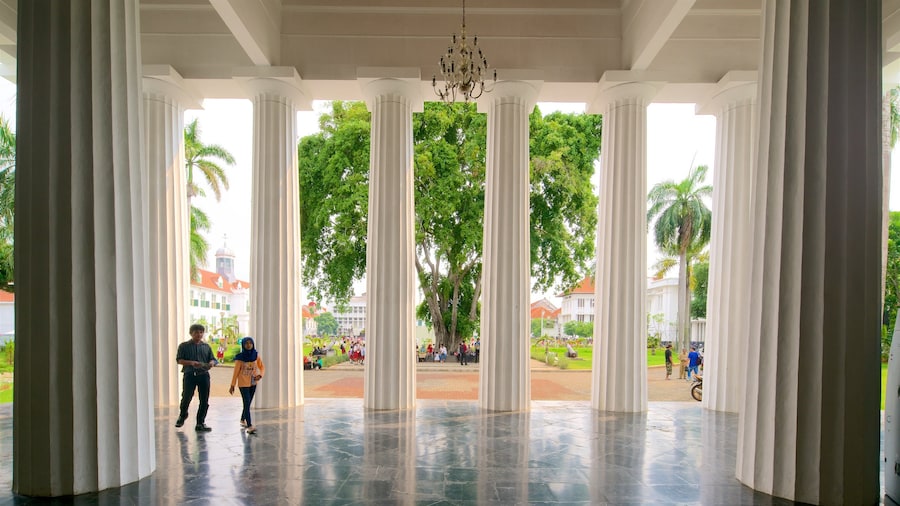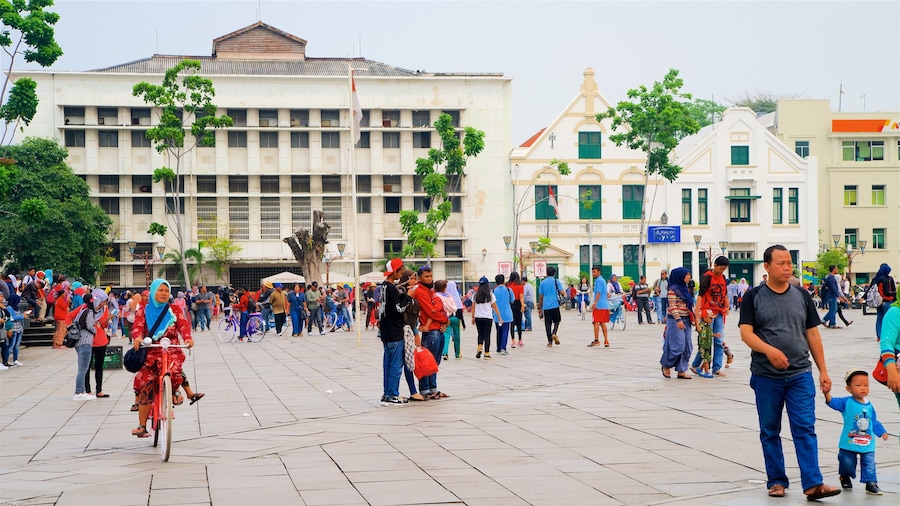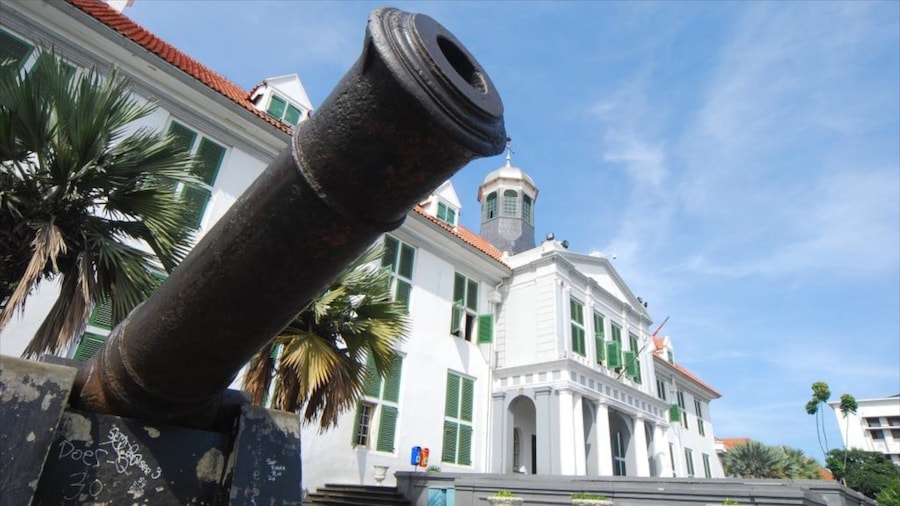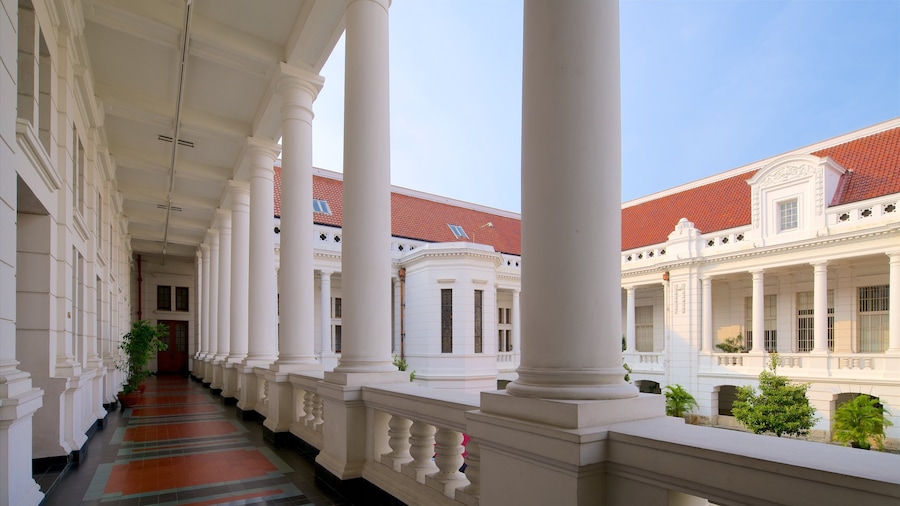Sunda Kelapa is a bustling city harbor that has been in use since as far back as the 1100s. Visit this place where dockworkers load and unload ships bound for the islands of the Indonesian archipelago as they have done for centuries. Sunda Kelapa was the principal port of the former Sunda Kingdom between the 13th and 16th centuries. The Dutch East India Company took the port in 1619 and began the foundation of Batavia (present-day Jakarta).
Take your time to admire the age-old pinisi boats, which are wooden sailing vessels built by the tribe’s people of the South Sulawesi province. They form part of a fleet delivering supplies and merchandise to Indonesia’s many islands and islets on a daily basis. Note the boats’ tall twin masts and the brightly painted hulls. Ask the captains about the possibility of stepping onboard and taking a look around a ship.
Arrive early in the morning to witness the liveliest action. Observe as hardened workers carry goods, including coal, spices and timber, to and from the boats. Marvel as they deftly run along narrow and wobbly gangplanks while supporting heavy loads on their backs.
Take a guided tour of the area on a motorized dinghy. See boats sailing into the harbor and spot the polygon-shaped lighthouses. Visit a fish market and listen as stall owners shout prices to the customers.
Go to the Maritime Museum, housed inside the one-time spice warehouse of the Dutch East India Company. It holds an important collection of artifacts related to Indonesia’s maritime heritage. Among these are centuries-old anchors, cannons, navigational equipment and a display of original and model boats. The museum is open from Tuesday to Sunday and has an admission fee.
Located in northern Jakarta, the Sunda Kelapa Harbor is about 4 miles (6.5 kilometers) north of Merdeka Square. Get here conveniently via an ojek motorbike taxi or a becak cycle rickshaw. About a 5-minute drive east is Marina Ancol. From here, take a cruise for the magnificent Thousand Islands.



